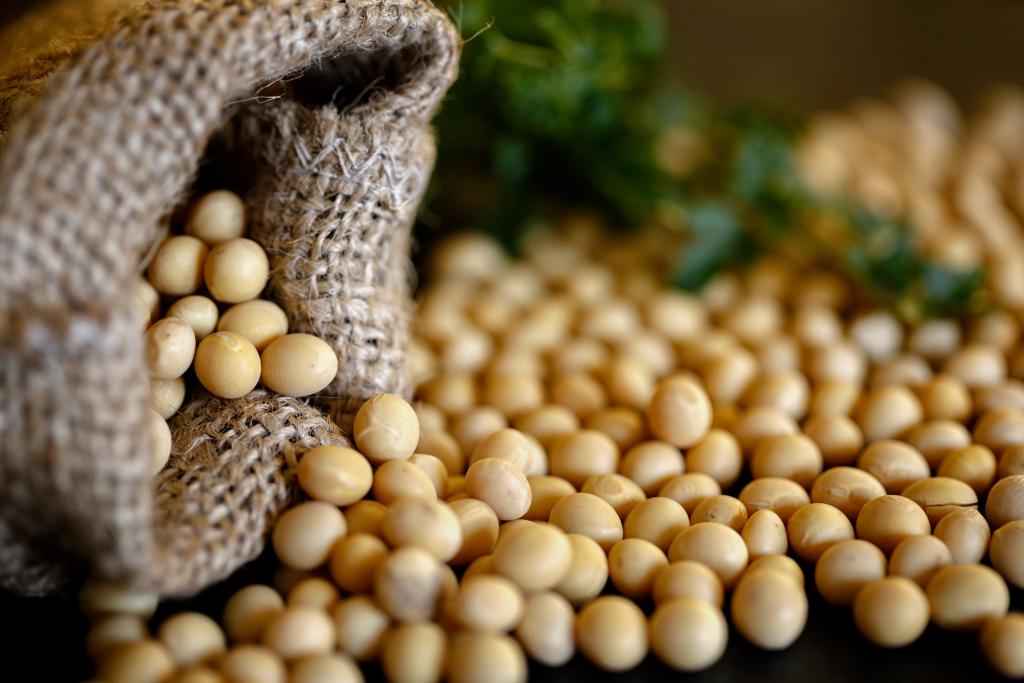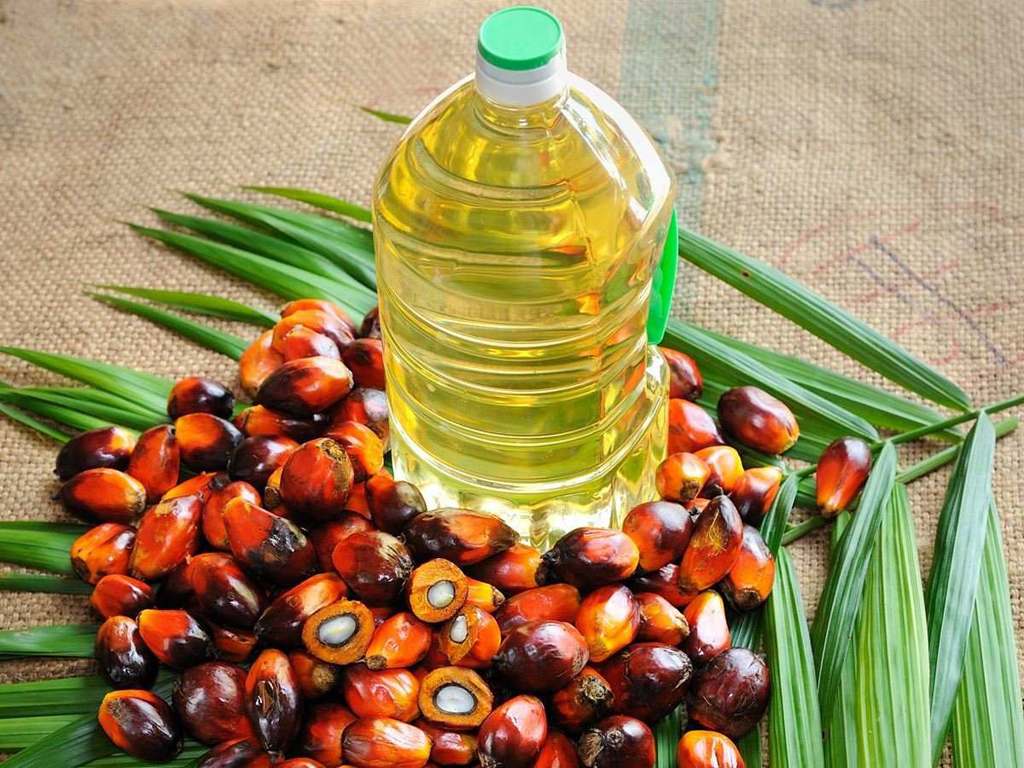Soybean Insights: Market Trends and Projections
In the realm of soybean futures trading, May delivery have surges by 34.25¢, reaching $11.87¼ per bushel. Concurrently, soymeal experienced a dip of $14.5 to $357.30 per short ton, while soy oil displayed resilience, unchanged reach 42.65¢ per pound.
|
Soybean |
||||||
|
Contract |
Last |
Change |
Open |
High |
Low |
Close |
|
24-May |
11.9 |
34.25 |
11.5575 |
12 |
11.5575 |
11.87 |
|
24-Jul |
11.99 |
28.75 |
11.7025 |
12.0175 |
11.7025 |
11.975 |
|
24-Aug |
11.995 |
27.75 |
11.7025 |
12.015 |
11.7025 |
11.9825 |
|
Soybean Oil |
||||||
|
Contract |
Last |
Change |
Open |
High |
Low |
Close |
|
24-May |
0.4257 |
0 |
0.425 |
0.4275 |
0.4235 |
0.4266 |
|
24-Jul |
0.4324 |
-0.02 |
0.434 |
0.4359 |
0.4283 |
0.4329 |
|
24-Aug |
0.4351 |
-0.03 |
0.436 |
0.4384 |
0.4314 |
0.4356 |
|
Soybean Meal |
||||||
|
Contract |
Last |
Change |
Open |
High |
Low |
Close |
|
24-May |
3.571 |
14.5 |
3.438 |
3.587 |
3.431 |
3.573 |
|
24-Jul |
3.649 |
15.9 |
3.49 |
3.664 |
3.49 |
3.642 |
|
24-Aug |
3.641 |
14.3 |
3.501 |
3.653 |
3.501 |
3.634 |
|
By Abdul Hameed Team |
||||||
Corn and Soybean Prices Rally Amid Market Reversal
Corn and soybeans, following a significant downturn in the previous session, rebounded strongly throughout the day, driven by a reversal in trader sentiment, as noted by Brian Hoopes from Midwest Market Solutions. Hoopes observed, “Corn and soybeans showed resilience, bouncing back from yesterday’s technical sales. It appears that some bargain hunting spurred the rise in soybean prices.” This upward movement in the market coincides with anticipation surrounding the Federal Reserve’s impending interest rate decision, which is exerting notable influence across various sectors.
- Federal Reserve Decision Impacting Market Sentiment
The anticipation surrounding the Federal Reserve’s interest rate announcement has notably influenced trading activities, contributing to the fluctuation in corn and soybean prices. Traders are closely monitoring the outcome of this decision, which is expected to have far-reaching for market.
Biden Administration’s GREET Model Provides Support
Additionally, the finalized implementation of the Biden administration’s GREET model has provided a boost to CBOT corn and soybeans. This model offers guidance on tax credits for sustainable aviation fuel (SAF), significantly benefiting corn and soybeans as renewable fuel sources. The clarity offered by this model plays a crucial role in determining the demand for these grains from fuel producers. However, there exists a spectrum of reactions within the agricultural community regarding the implications of this guidance, with certain groups
- Anticipated Decline in Grain Export Sales
Analysts are forecasting a potential decline in grain export sales, which could exert downward pressure on CBOT grain futures in the latter part of the week. Projections suggest that wheat and soybean sales may decrease by up to 100,000 metric tons for the marketing years 2023/24 and 2024/25, based on data up to April 25. Intense competition from other global producers, particularly Russia for wheat and Brazil for soybeans, has contributed to this anticipated decline in export sales.
Kazakhstan Witnesses Surge in Sunflower Oil Production
|
Soybeans |
|
|
Actual Sales (in MT) |
2023-24: 414,000 |
|
Expectations (in MT) |
2023-24: 100,000-700,000 |
|
Weekly Sales Details |
Net sales of 414,000 MT for 2023/2024 were up 96 percent from the previous week and 45 percent from the prior 4-week average. Increases primarily for Egypt (146,000 MT), Indonesia (112,000 MT, including 55,000 MT switched from unknown destinations and decreases of 100 MT), Japan (92,800 MT, including 83,400 MT switched from unknown destinations and decreases of 2,100 MT), Taiwan (26,300 MT), and Colombia (25,600 MT, including 16,000 MT switched from unknown destinations), were offset by reductions primarily for unknown destinations (9,600 MT), Iran (5,500 MT), Jordan (1,500 MT), China (1,000 MT), and Mexico (600 MT). Net sales of 7,000 MT for 2024/2025 were reported for Taiwan (5,000 MT) and Indonesia (2,000 MT). |
|
Weekly Export Details |
Exports of 269,100 MT–a marketing-year low–were down 36 percent from the previous week and 43 percent from the prior 4-week average. The destinations were primarily to Japan (86,100 MT), Indonesia (86,000 MT), Mexico (33,300 MT), Colombia (16,100 MT), and Vietnam (13,000 MT). |
|
Comments and Performance Indicators |
Export commitments are running 17.3% behind a year-ago, compared to 17.7% behind last week. USDA projects exports in 2023-24 at 1.700 billion bu., down 14.7% from the previous marketing year. |
|
Soymeal |
|
|
Actual Sales (in MT) |
2023-24: 131,000 |
|
Expectations |
2023-24: 150,000-350,000 |
|
Weekly Sales Details |
Net sales of 131,000 MT for 2023/2024 were down 57 percent from the previous week and 37 percent from the prior 4-week average. Increases primarily for the Dominican Republic (40,400 MT, including decreases of 2,500 MT), Morocco (19,900 MT, including 20,000 MT switched from unknown destinations and decreases of 100 MT), Colombia (13,000 MT, including decreases of 7,600 MT), Nicaragua (12,800 MT, including 5,200 MT switched from Guatemala and decreases of 5,100 MT), and Jamaica (10,900 MT, including 2,000 MT switched from Trinidad and Tobago), were offset by reductions for unknown destinations (20,000 MT), Vietnam (14,500 MT), and Japan (800 MT). Total net sales of 3,400 MT for 2024/2025 were for Canada. |
|
Weekly Export Details |
Exports of 295,800 MT were up 56 percent from the previous week and 8 percent from the prior 4- week average. The destinations were primarily to the Philippines (99,300 MT), Colombia (65,000 MT), Mexico (27,100 MT), Honduras (19,900 MT), and Canada (19,900 MT). |
|
Comments and Performance Indicators |
Export commitments are 14.5% ahead of a year-ago, compared to 15.3% ahead last week. USDA projects exports in 2022-23 will increase 7.7% from the previous marketing year in 2023-24. |
|
Soyoil |
|
|
Actual Sales (in MT) |
2023-24: 7,200 |
|
Expectations |
2023-24: (5,000)-10,000 |
|
Weekly Sales Details |
Net sales of 7,200 MT for 2023/2024 were down 56 percent from the previous week, but up 21 percent from the prior 4-week average. Increases were primarily for Jamaica (3,500 MT), Colombia (2,900 MT, including decreases of 500 MT), and Canada (400 MT). |
|
Weekly Export Details |
Exports of 2,200 MT were down 26 percent from the previous week and 53 percent from the prior 4-week average. The destinations were to Mexico (1,900 MT) and Canada (300 MT). |
|
Comments and Performance Indicators |
Export commitments are running 5.2% behind a year-ago, compared to 0.7% behind last week. USDA projects exports will decrease 7.4% in 2023-24. |
Sunflower Oil Exports Surge in Ukraine, Anticipated Challenges Ahead
Ukraine – The export of sunflower oil from Ukraine during the September-April 2023/24 marketing year surpassed 4.4 million tons, marking a notable increase of 17% compared to the corresponding period of the previous season. This surge in exports represents the second-highest volume in history, following the exceptional performance recorded in the 2019/20 marketing year.
- Factors Driving Export Growth
The increased demand for sunflower oil, fueled by its competitive pricing relative to other vegetable oils, has been a key driver behind this significant export growth. While Experts have revised their export estimates for the 2023/24 season, projecting a total of 5.6 million tons, reflecting a 4% increase from previous estimates in April. However, despite this optimistic outlook, concerns loom regarding the potential decline in monthly shipment volumes in the coming months.
Kazakhstan Witnesses Surge in Sunflower Oil Production
Kazakhstan – The first three months of the current year have witnessed a remarkable surge in sunflower oil production in Kazakhstan, with output reaching 136.59 thousand tons. This represents a substantial increase of 34% compared to the corresponding period in 2023 and an impressive 87% rise from the first quarter of 2022, as per official statistics.
- Regional Performance Highlights
Notable contributions to this surge in production emanate from regions such as East Kazakhstan (EKR) and Abay, which recorded production volumes of 60 thousand tons and 35 thousand tons, respectively. March marked a significant milestone, with the country’s overall production volume reaching its highest level in the past 16 months, totaling 47.3 thousand tons.
- Expansion of Export Market Presence
Kazakhstan’s export of rapeseed to the EU has witnessed a substantial uptick during the current season. Data from the European Commission indicates a notable increase in oilseed shipments to EU countries, reflecting a 3.7-fold rise compared to the same period last season. This surge in exports has positioned Kazakhstan among the top exporters of oilseeds to EU markets, underscoring the country’s growing prominence in the global agricultural landscape.
Weather Extremes Pose Challenges for Brazilian Agriculture
Brazil – Recent weather patterns in Brazil have presented contrasting challenges for agricultural activities across different regions. While central Brazil grapples with an early cessation of wet season showers, leading to accelerated depletion of subsoil moisture, southern regions, particularly in the state of Rio Grande do Sul, are contending with excessive rainfall and flooding. Conversely, southern Brazil, notably Rio Grande do Sul, has experienced a deluge of heavy rainfall, resulting in widespread flooding and waterlogging. Recent precipitation levels have far exceeded seasonal averages, with some areas recording over 500 millimeters of rainfall over the past month.
Indonesia’s Palm Oil Exports Decline Amidst Global Market Dynamics
Indonesia – In February, Indonesia witnessed a decline in palm oil exports, with shipments totaling approximately 2.17 million tons compared to 2.91 million tons during the same period last year, according to data from the national association GAPKI.
- Factors Influencing Export Trends
The reduction in palm oil shipments can be attributed to several factors, including intensified competition from alternative oils such as rapeseed and sunflower, which offered more competitive pricing in global markets. Additionally, high inventories of soybean oil have contributed to dampened demand for palm oil on the global stage, further exacerbating the decline in exports. Despite the decline in exports, domestic consumption of palm oil in Indonesia witnessed a marginal increase, reaching 1.86 million tonnes in February compared to 1.8 million tonnes in the previous year.
In conclusion, the soybean market’s intricacies reflect a delicate dance of supply, demand, and global dynamics. As we navigate these fluctuations, staying attuned to market trends and agricultural forecasts is paramount across the supply chain. So we are predicting that soybean market project a Neutral To Slightly Bullish trend Projections and as well in hovering within the range of $11.3 to $12.3



